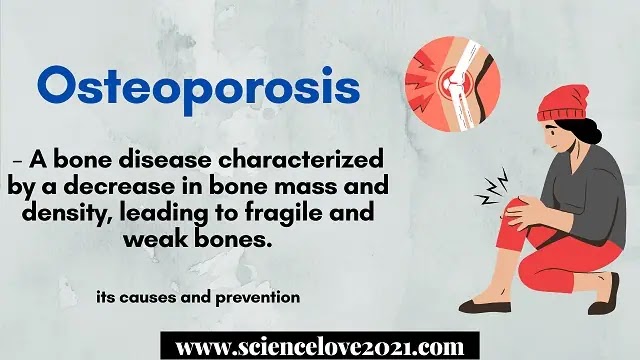Osteoporosis is a common bone disease that affects millions of people worldwide. It is a condition characterized by a decrease in bone mass and density, leading to brittle and weak bones that are more susceptible to fractures.
Osteoporosis is a silent disease that may not be noticed until a fracture occurs, and it is most commonly seen in older adults, especially post-menopausal women. Here we will discuss what is osteoporosis, its causes and how it can be prevented.
Bone remodeling is a natural process that occurs throughout life, where old bone tissue is broken down, and new bone tissue is formed.
In osteoporosis, bone resorption (the breaking down of bone tissue) exceeds bone formation, leading to a net loss of bone mass and density. The bones become weaker, fragile, and more susceptible to fractures. Osteoporosis can affect any bone in the body, but the most common sites of fractures are the hip, spine, and wrist.
Also Read - Benefits of Regular Exercise
Cause of Osteoporosis
➤ There are several risk factors associated with osteoporosis, including age, genetics, hormonal changes, poor nutrition, lack of physical activity, and certain medications. Aging is a significant risk factor, as bone loss occurs naturally as we age.
➤ Women are more susceptible to osteoporosis than men, particularly after menopause, as the loss of estrogen accelerates bone loss.
➤ A family history of osteoporosis also increases the risk, as does a small frame, a history of fractures, and certain medical conditions such as rheumatoid arthritis or hyperthyroidism.
Read more: How to Develop a Healthy Eating Plan
Diagnosis
A bone mineral density test, such as a DEXA scan, is used to diagnose osteoporosis.
Prevention of Osteoporosis
Preventing osteoporosis involves maintaining healthy bones throughout life. This can be achieved through a combination of lifestyle changes and medical interventions.
To prevent osteoporosis, we should do the following things-
➤ A healthy diet rich in calcium and vitamin D is essential for maintaining bone health.
➤ Calcium is the primary building block of bones, and vitamin D helps the body absorb calcium.
➤ Good sources of calcium include dairy products, leafy green vegetables, and fortified foods, while vitamin D can be obtained from sunlight and fortified foods.
➤ Regular exercise is also essential for bone health, as it helps to build and maintain bone mass. Exercises that involve bearing weight, like running and weightlifting, are particularly beneficial. However, people with osteoporosis or at high risk of osteoporosis should consult their healthcare provider before starting an exercise program.
Read More - Building Healthy Habits that Last
Apart from this Medical interventions such as hormone replacement therapy or medications that increase bone density can also help prevent osteoporosis. Hormone replacement therapy can be effective in preventing bone loss in women after menopause, while medications can also slow bone loss and increase bone density in both men and women with osteoporosis.
Preventing falls is also essential in preventing osteoporosis-related fractures. Falls are a common cause of fractures, particularly in older adults. Simple modifications to the home environment, such as removing tripping hazards, installing handrails, and improving lighting, can reduce the risk of falls and subsequent fractures.
Conclusion
Osteoporosis is a common bone disease that can have serious consequences if left untreated. It is caused by an imbalance in the natural process of bone remodeling, and risk factors include genetics, aging, hormonal changes, poor nutrition, lack of physical activity, and certain medications.
Preventing osteoporosis involves maintaining healthy bones throughout life through a combination of lifestyle changes and medical interventions.
A healthy diet, regular exercise, medical interventions such as hormone replacement therapy and medications that increase bone density, and fall prevention strategies can help prevent osteoporosis and maintain bone health.
Read More- H3N2 Influenza Virus



No comments:
Post a Comment